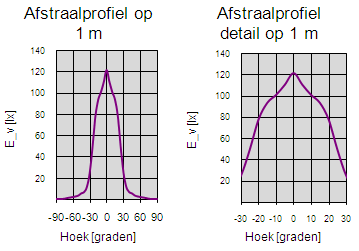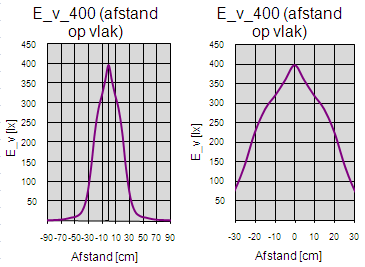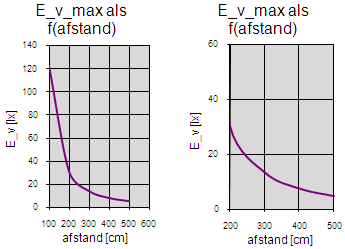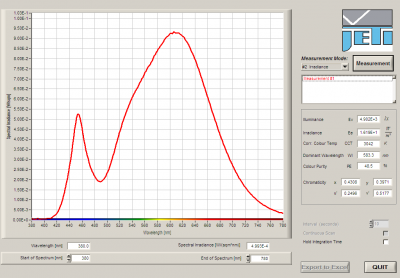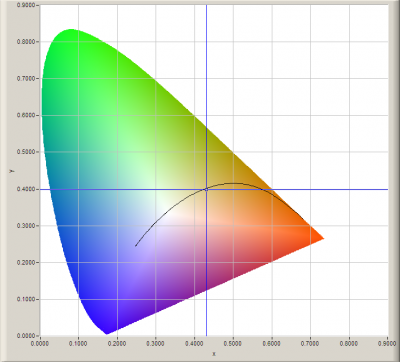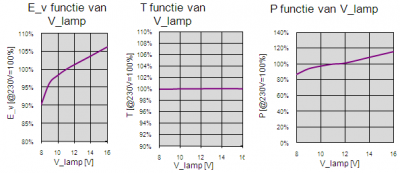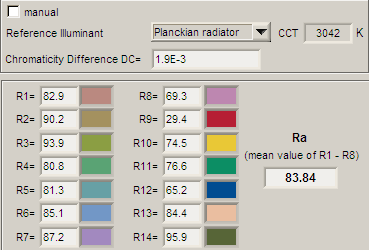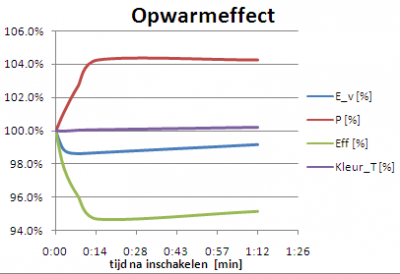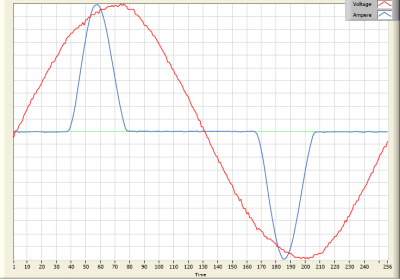Line Lite International BV M2 3W MR11 Led Spotlight
Posted by Marcel van der Steen in Led lights, Light measurements No Comments»In this article a nice little light bulb is presented from Line Lite International BV. It gives quite a lot of light output for its size and 2.5 W that it consumes. The beam angle is wide enough to illuminate a lot within short distance.
See this overview for a comparison with other light bulbs.
Samenvatting meetgegevens
| parameter | meting lamp | opmerking |
|---|---|---|
| Color temperature | 3042 K | Warm white. |
| Luminous intensity Iv | 95 Cd | |
| Beam angle | 46 deg | |
| Power P | 2.5 W | |
| Power Factor | 0.64 | For every 1 kWh net power consumed, there has been 1.2 kVAhr for reactive power. |
| Luminous flux | 88 lm | |
| Luminous efficacy | 36 lm/W | |
| CRI_Ra | 84 | Color Rendering Index. |
| Coordinates kleursoort diagram | x=0.43 and y=0.40 | |
| Fitting | MR11 | |
| Diameter | 35 mm | Measured on the widest diameter of the light bulb |
| Length | 34 mm | Excluding pins. |
| General remarks | The light bulb is small in size, despite that it gives a lot of light output.
Illumination and consumed power are a little bit dependent from the applied light bulb voltage. The warm up effect is measured, and all parameter variations stay within 5 % variation. At the end there is an image of the voltage and current waveform. |
E_v at 1 m distance
The illumination at 1 m distance.
The light bulb has a beam angle of 46 degrees and an intensity straight underneath the light bulb of 122 Cd.
Distance where Ev=400 lx and graph
Distance at which the Ev=400 lux is at 55 cm.
The value of 400 lux is interesting as it is often used as a reference value to be able to read a book.
However this light bulb’s primary function is not to use it as a reading light, but to illuminate jewellery, or other items.
E_v as function of distance
The illumination as function of distance.
The E_v is computed, following the inverse relation between distance and illumination.
Luminous flux
With the averaged illuminance data at 1 m distance, taken from the graph showing the averaged radiation pattern, it is possible to compute the luminous flux.
The result of this computation for this light spot is a luminous flux of 88 lm.
Luminous efficacy
The luminous flux being 88 lm, and the power of the light bulb being 2.5 W, yields a luminous efficacy of 36 lm/W.
The luminous efficacy drops a little bit (5 %) due to the warm-up-effect.
A power factor of 0.64 means that for every 1 kWh net power consumed, a reactive component of 1.2 kVAr was needed.
| Netspanning | 12 V |
| Lampstroom | 321 |
| Vermogen P | 2.45 W |
| Schijnbaar vermogen S | 3.85 VA |
| PF | 0.64 |
Color Temperature and Spectral Power Distribution
All kinds of data obtained with help of the spectroradio meter.
Herewith a screenshot of what a spectroradio meter measures. There are the power spectrum, color temperature and dominant wavelength.
The light bulb gives a warm white light of about 3050 K.
Chromaticity diagram
The chromaticity space and the position of the lamp’s color coordinates in it.
The light coming from this lamp on top of the Planckian Locus (the black path in the graph).
Its coordinates are x=0.43 and y=0.40.
Voltage dependency
The dependency of a number of lamp parameters on the lamp voltage is determined. For this, the lamp voltage has been varied and its effect on the following light bulb parameters measured: illuminance E_v [lx], the lamppower P [W] and the (Correlated) Color Temperature [K].
Lamp voltage dependencies of certain light bulb parameters, where the value at 230 V is taken as 100 %.
The color temperature remains constant. The consumed power as ell as the illumination vary on the light bulb voltage used.
The variation is small and an abrupt change in light bulb voltage of 0.25 V (comparable to 5 V at 230 V AC mains) leads to a change in illuminaton level of << 5 % and hence will not be visible.
Color Rendering Index or Ra
Herewith the image showing the CRI as well as how well different colors are represented (rendered). The higher the number, the better the resemblance with the color when a black body radiator would have been used (the sun, or an incandescent lamp).
Each color has an index Rx, and the first 8 indexes (R1 .. R8) are averaged to compute the Ra which is equivalent to the CRI.
CRI of the light of this lightbulb.
The value of 84 is higher than 80 which is considered a minimum value for indoor usage.
Note: the chromaticity difference is 0.0019 indicates the distance to the Planckian Locus. Its value is lower than 0.0054, which means that the calculated CRI result is meaningful.
Warm up effects
After switch on of a cold lamp, the effect of heating up of the lamp is measured on illuminance E_v [lx], color temperature CT or correlated color temperature CCT [K], the lamppower P [W] and the luminous efficacy [lm/W].
Effect of warming up on different light bulb parameters.
The warm-up time is about 10 minutes, during which the illumination drops 1 %, the consumed power increases 4 %. All negligible.
Voltage and current measured
The voltage over and current through the light bulb.
Current is in phase with the voltage, however the current has not the same waveform; instead of a sine form it has peaks. This results in a power factor less than 1.

